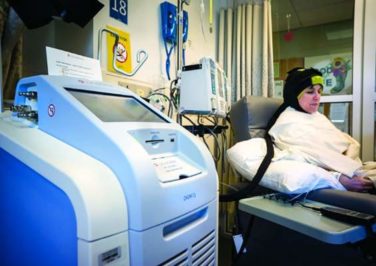Fear of the unknown is driving many pediatricians to refer out their patients with simple and easily managed orthopedic and dermatologic complaints. From several perspectives, this tendency to dump and run is unfortunate. For the patients and their families, a trip to the specialist may be expensive, certainly time consuming, and often comes after a long anxiety provoking and frustrating delay.
For the physician worried about her bottom line or who is being told by her practice administrator to see more patients, sending away a patient with a skin rash that can be diagnosed in 30 seconds (10 seconds in many cases) and explained in 5 minutes is a poor business decision. The office time required to make the referral could be as much as $20 while the 10-minute visit probably generates twice that in revenue.
But, the real tragedy is that, by referring out patients with simple dermatologic and orthopedic complaints, the physician is depriving herself of a source of intellectually stimulating variety. Parents appreciate the effort when their child’s doctor demonstrates that she is a more complete physician.
At least when it comes to gap in the dermatology training of pediatricians, there is a glimmer of a solution on the horizon. As reported by this news organization (“What should pediatricians know about dermatology?” Sept. 2014, page 1) the Society of Pediatric Dermatologists convened a committee of pediatricians, family practitioners, and pediatric dermatologists to determine what a pediatrician’s training in dermatology should include with the goal of creating an online pediatric dermatologic curricular for primary care providers.
Exactly how this training should be structured is yet to be determined. However, while we are waiting, I’m going to offer a few suggestions on what a pediatricians’ training in dermatology should look like. I would divide the training into three segments. The first would be a couple of hours of a one-on-one or small-group session with a dermatologist (not necessarily a pediatric dermatologist) in which the students were shown and participated in the Sherlock Holmes deductive reasoning approach that a good diagnostician uses as he approaches an unfamiliar skin lesion. Does it seem to be an “inside” or and “outside” job? Is there a sun exposure distribution? Raised or flat? Does it itch? At a minimum, the doctor in training should learn the language used to describe the lesion.
Second, there should be an hour or two of lectures on the diagnosis and management of common dermatologic conditions that require management, with atopic dermatitis and acne leading the short list. This should include a demonstration on how to do skin scraping for fungus, a simple skill that the select committee rejected based on the complaints of its pediatric members.
Finally, there is what one of my instructors called the “Aunt Millie” diagnoses. The scores of common skin findings that one learns by repeated exposure. “If it looks like Aunt Millie, it’s probably Aunt Millie.” This requires abundant exposure to the scores of patients that fill any busy outpatient setting, some of whom who did not even present with a skin complaint. I am sure that technology exists that would allow each student to keep a list of “must-see” findings on his smartphone. This list is updated as he progresses through his training. The program would keep a live data bank of each trainee’s list. When an instructor (not necessarily a dermatologist, could even be a fellow trainee) encounters a common finding, a quick entry in to his or her smartphone could summon for a quick look some or all the trainees whose data bases reflect that they haven’t seen this finding before. Parents and patients are usually impressed when their skin rash gets the special attention of several doctors. If time allows, there may even be a quick 3-minute explanation of the finding. This kind of sharing has been the hallmark of a good training program for years, but now is the time to let our smartphones and computers expand it to fill an embarrassing gap in our education of pediatricians.
Dr. Wilkoff practiced primary care pediatrics in Brunswick, Maine, for nearly 40 years. He has authored several books on behavioral pediatrics, including “How to Say No to Your Toddler.” E-mail him at pdnews@frontlinemedcom.com.




